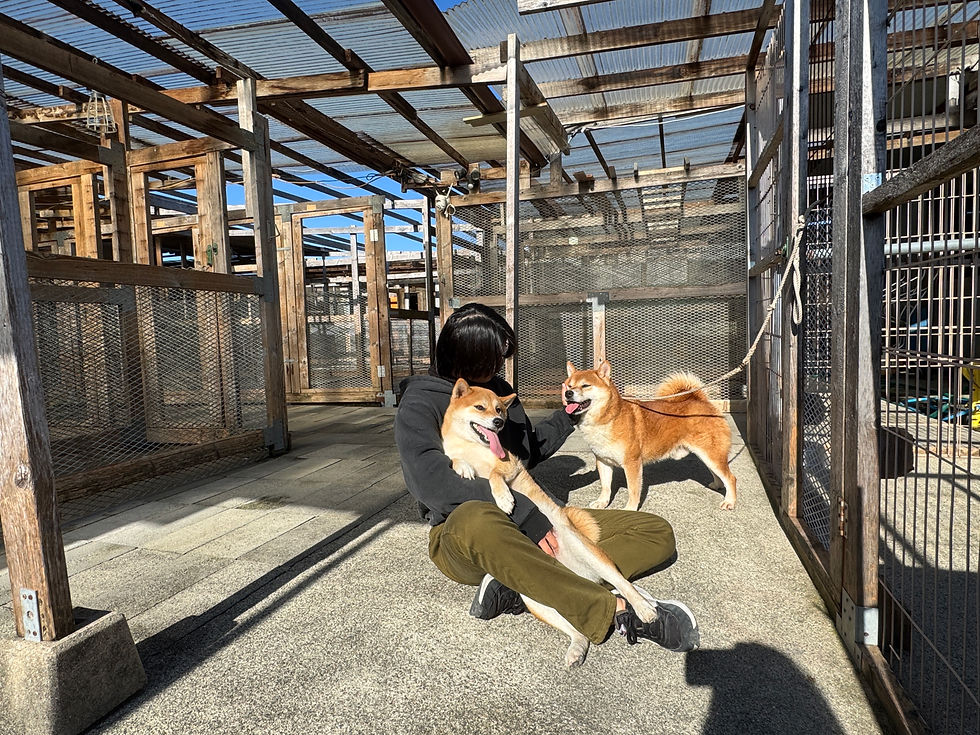The Prewar Educational Structure and Cultural Meaning Surrounding the Military-Dog Hero Tale Inu no Tegara (“A Dog’s Deed of Valor”)
- Suda Hiroko すだDOGファーム

- 4 hours ago
- 3 min read
1. Introduction — Dogs in the Textbook

Prewar primary-school national-language readers contained numerous texts featuring dogs. Among the most emblematic was Inu no Tegara, adopted in 1934 (Shōwa 9). Based on the true account of the military dogs “Nachi” and “Kongō,” who were killed in action during the Manchurian Incident, the piece was designed to instill in pupils the virtues of loyalty, service, and devotion to the nation.Why were dogs so intensively mobilized for education? This article examines the background from intersecting perspectives in the histories of education, the military, and culture.
2. How Inu no Tegara Became a Teaching Text

2.1 Source and Adaptation
The prototype was a letter written by Captain Itakura, who served in the Manchurian Incident and recorded the feats of military dogs. First submitted as a prize essay, the story was revised for pedagogical effect and incorporated into the state-authorized National Language Reader.
2.2 Intentions Visible in Teachers’ Guides
Teachers’ manuals set out concrete methods of instruction, including:
Primary aim: cultivate understanding of loyalty and public service.
Reading aloud: alternate emphasis on “bravery” and “sorrow” to shape the emotional arc.
Supplementary instruction: explain canine roles (messenger, sentry, search) so pupils grasp their “contribution to the war effort.”
The material thus combined a dual structure of empathic engagement and knowledge supplementation.
3. From Factual Military Dogs to Edifying Anecdote
3.1 Captain Itakura’s Letter and the Dogs’ Deaths
Nachi and Kongō did, in fact, die in action. Captain Itakura’s letter was published in newspapers as a morale-boosting anecdote.
3.2 Edification and Embellishment

In classrooms the story was dramatized as “the brave deaths of a brother-and-sister pair,” refined into a more dramatically effective lesson. The dog “Mary” was omitted, and the narrative stabilized as a simpler, more graspable “two-dog legend.”
3.3 Monuments and Community Participation
In Zushi, a “Loyal Dog Monument” was erected through children’s donations. Dog-centered materials thus served as catalysts linking schooling to local patriotic mobilization.
4. Reception and Effects in the Classroom
4.1 Pupils’ Learning Activities
Composition: waves of essays praising canine loyalty.
Recitation: reading the dogs’ deaths aloud intensified identification.
Drawing: assignments depicting dogs and soldiers reinforced loyalty visually.
4.2 Turning Emotion into an Educational Resource
Educators valued canine narratives as “materials that move children to tears.” By stirring the heart, they aimed to deepen the internalization of loyalty to the state.
5. Dog Texts and Military Ideology
5.1 “Faithful Dog = Loyal Retainer”
Canine fidelity was transposed from loyalty to family or master to loyalty to the nation and the Emperor. A readily understood, intimate model for children was converted into a symbol of militarist virtues.
5.2 Juxtaposing Animal and Human Sacrifice
The dogs’ deaths were paralleled with soldiers’ sacrifice for the nation. The text implicitly suggested that “humans, too, should be loyal like dogs,” reinforcing wartime pedagogy.
6. Cultural-Historical Background — Intersections of Dogs and Society
6.1 Links with the Japan Dog Preservation Movement
The 1930s saw the founding of the Nihon Ken Hozonkai, which celebrated the Akita and Shiba as “national dogs.” Military-dog materials resonated with this symbolization, helping fuse “ethnic spirit” with “loyalty.”
6.2 Dogs in Urban Culture
Concurrently, the Hachikō boom broadened urban pet culture. The parallel classroom presence of “Hachikō the faithful companion” and “Nachi and Kongō the war dogs” shows that dogs occupied a dual cultural position as both symbols of peace and symbols of militarism.
7. International Comparison
7.1 Germany

In Nazi Germany, the German Shepherd was promoted as a military dog and appeared in children’s books and films. “Dog = loyalty” operated as a shared ideological motif.
7.2 United States and United Kingdom

Lassie and the Saint Bernard were deployed educationally as symbols of “home” and “rescue,” with a far weaker military coloration—marking a significant divergence from Japan.
8. Rupture and Continuity in Postwar Education
After the war, moral instruction (shūshin) was abolished, and military-dog materials were rejected as “remnants of militarism.” Even so, dogs did not vanish from teaching: they were repurposed to convey “friendship,” “responsibility,” and “coexistence.” The loyal war dog was reborn as the “friendly companion,” preserving a cultural continuity between prewar and postwar periods.

9. Future Research Tasks
Chronological analysis of dog-related materials in textbooks.
Clarification of relationships with the Imperial Military Dog Association and the Japan Dog Preservation Society.
Source studies of pupils’ essays and diaries documenting reception.
Comparative education to delineate universals and particularities vis-à-vis Europe and the U.S.
10. Conclusion
Inu no Tegara is more than a military-dog morality tale. By mediating values through the familiar figure of the dog, it functioned as a teaching tool through which the state sought to inculcate loyalty and sacrifice in children. At the same time, it intersected with the Japan dog-preservation movement and community mobilization, giving it substantial cultural weight.Research on dog-centered materials offers a new bridge between educational history and animal cultural history—indispensable for a holistic understanding of prewar Japanese society.





Comments